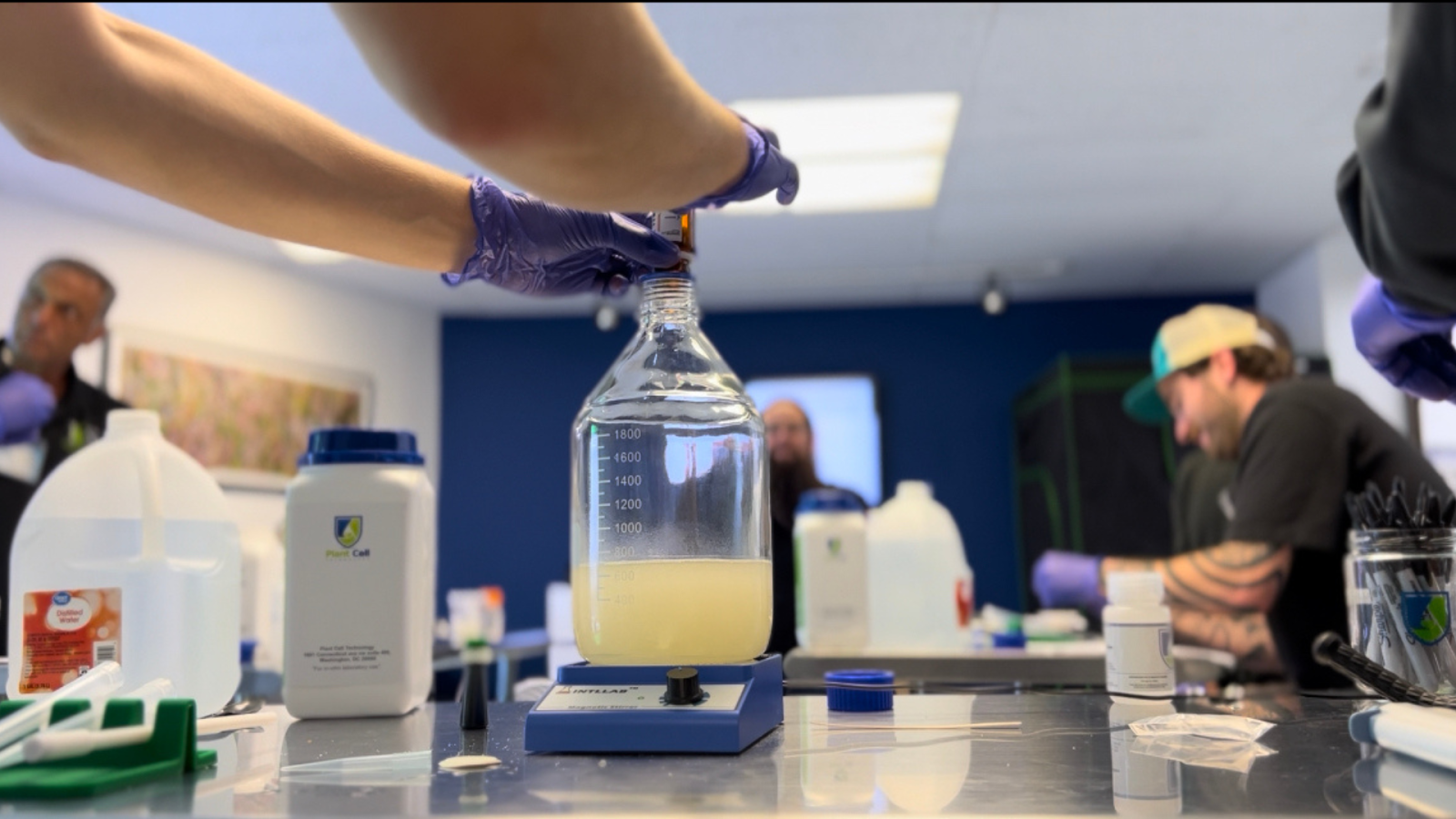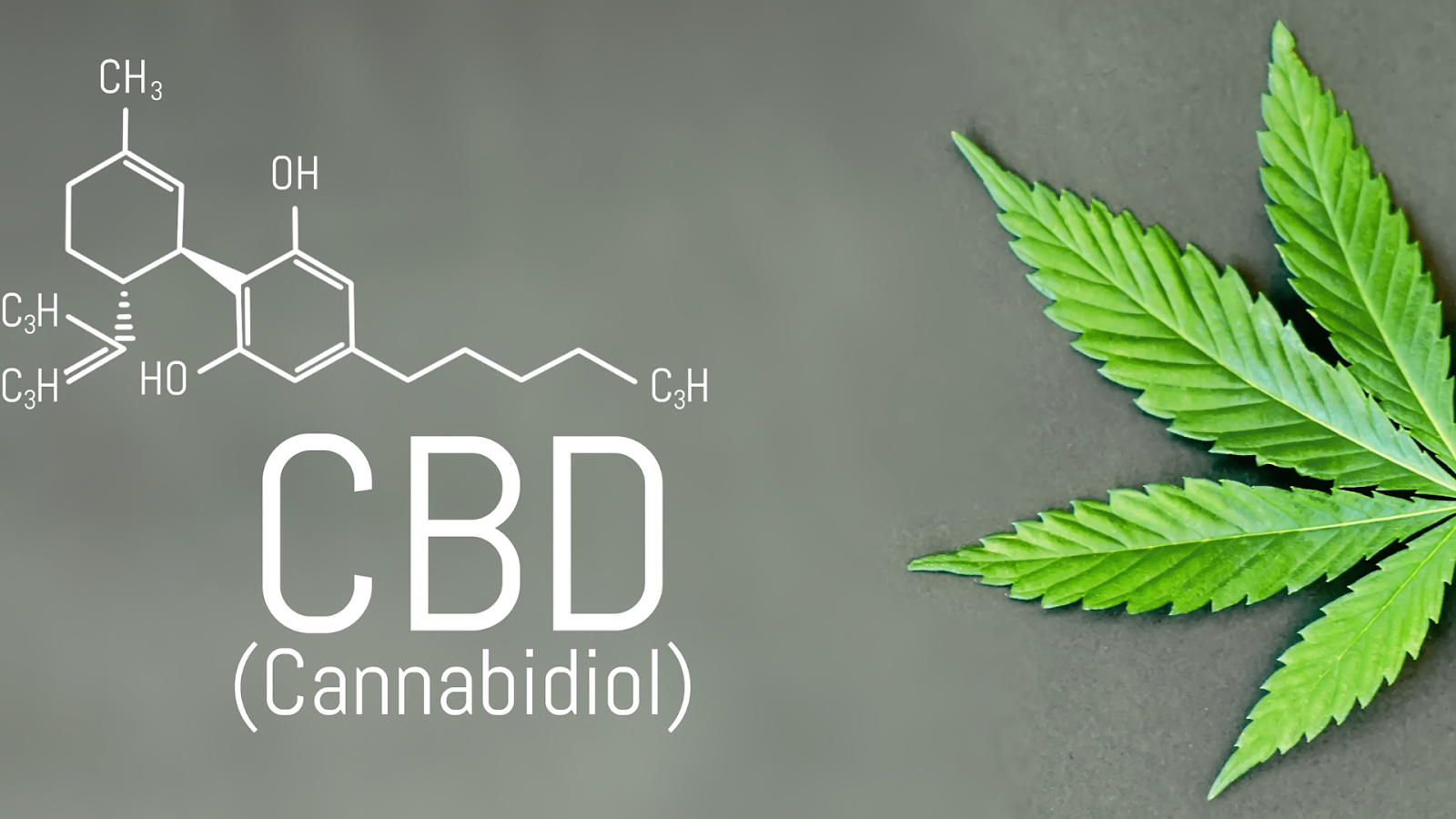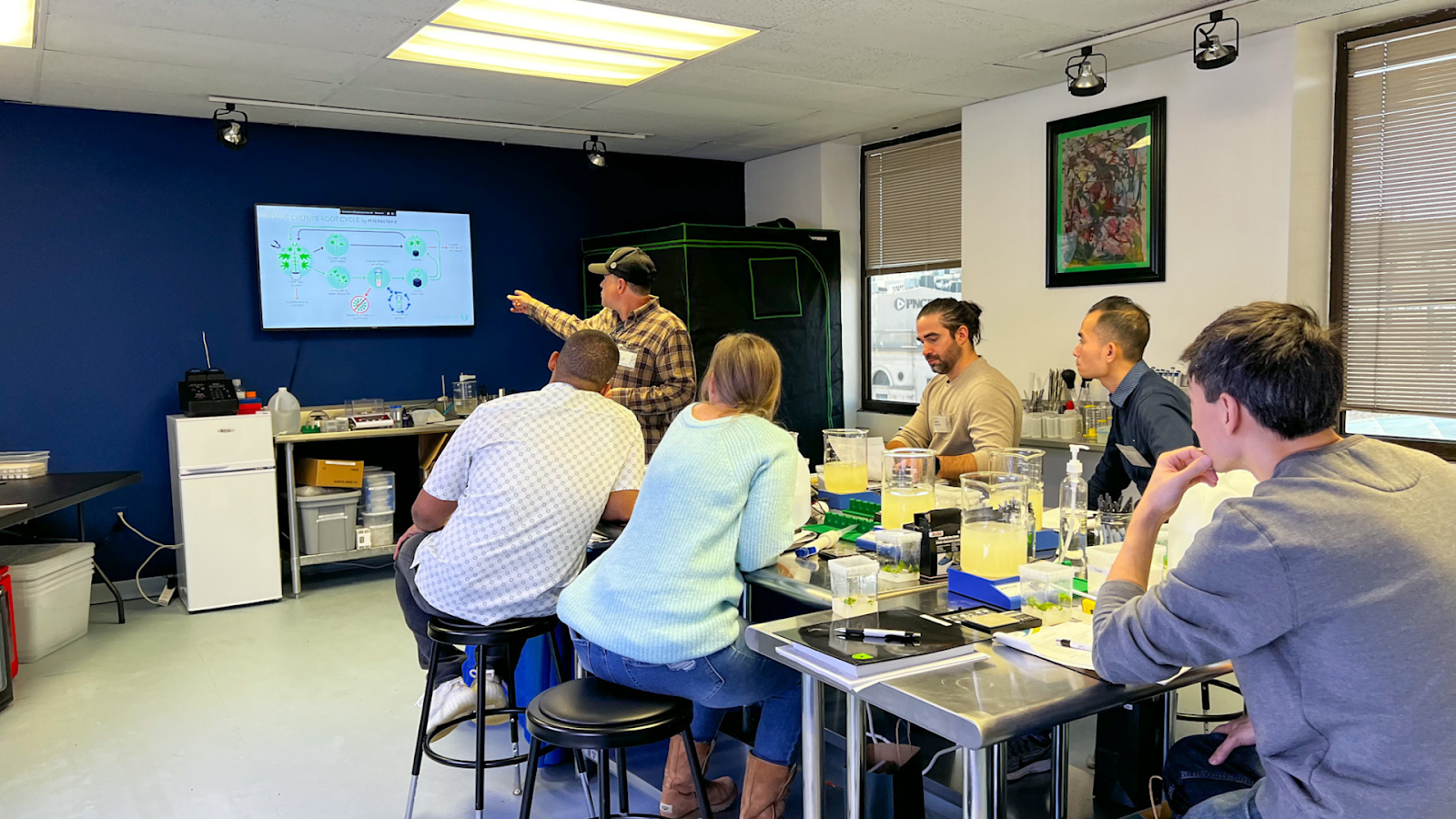
Tissue Culture: An Effective Way to Maximize Cannabis Yield

Introduction
With the legalization of Cannabis and its major acceptance for medical purposes, the field has seen recent growth in recent years. And, as the field is continuously expanding, Cannabis growers are looking for ways that can improve the quality, yield, and efficiency.
One promising technique for achieving Cannabis yield and disease-free plant production goal is tissue culture!
Tissue culture is an advanced plant propagation technique available today! For many years, it has been an essential part of plant research to overcome the limitation of traditional methods of growing plants and studying plant development.
The technique involved the growth of plant cells or tissues under controlled sterile conditions, allowing growers to produce large quantities of genetically identical plants that are free from disease. With tissue culture, growers can ensure consistent plant quality, improve resistance to pests and diseases, and maximize yield.
In cannabis cultivation, tissue culture has emerged as a powerful tool for maximizing yield and improving plant quality. Many Cannabis industries and growers are now turning towards learning the technology for the growth and expansion of their Cannabis business.
In this article, we cover more about the tissue culture technique, including its advantages, protocol, and maximizing yield using the technique.
What Is Tissue Culture And How Does It Work?

Tissue culture is a method of growing plants in a sterile controlled environment in a nutrient-rich media. In this process, a small piece of tissue or cells are taken from plants, sterilized using chemicals, and under aseptic conditions, transferred to a media containing all essential micro and macro elements for their growth and development.
The steps involved in the process of tissue culture include:
- Donor plant selection: At this step, a donor plant with desirable traits such as high yield, disease resistance, or unique cannabinoid profiles is selected for the tissue culture process.
- Explant sterilization: The explant or starting material (such as leaves, stem, root, flower bud, or any other plant tissues) obtained from the mother plant is surface sterilized to get rid of any contaminants sticking on the surface of the tissue.
- Culture Initiation: At this stage, the sterilized explant is transferred to a nutrient-rich medium, which stimulates cell division in tissues that lead to the formation of a callus (an unorganized and undifferentiated mass of cells).

- Multiplication: At this stage, the callus is divided into a few subsections and then transferred to a nutrient medium containing plant hormones. Generally, the media contains a high concentration of cytokinin (a plant hormone) for shoot development.
- Rooting: The fourth step is transferring the developed shoots to rooting media, which generally contains a high concentration of auxin, for the development of roots.
- Acclimatization: This is the last stage at which the plantlets are moved to normal environmental conditions outside the laboratory. This is done by gradually exposing the plants to lower humidity and light conditions until they can survive in the natural conditions.

Figure: An illustration of the process of Cannabis tissue culture.
Advantages of Using Tissue Culture For Cannabis Propagation
Here’re some advantages of using tissue culture for cannabis setup:
- Produce a large number genetically identical plants: Cannabis cultivation using tissue culture allow the production of large numbers of genetically identical plants quickly and efficiently. This is especially useful for commercial growers. By starting with a small tissue sample, growers can produce hundreds or even thousands of identical plants in a relatively short amount of time.
- Produce Disease-Free plants: The major challenge Cannabis cultivators face is the attack of disease and pests. This can be solved using tissue culture. The meristem culture technique allows growers to produce disease-free plants on large scale.

- Select and produce plants with desirable traits: Tissue culture allows growers to select plants with desirable traits, such as high THC or CBD content, and propagate those traits through multiple generations. This is known as "clonal selection," and it can be a powerful tool for maximizing yield and potency.

- Rescue Valuable Genetics: Tissue culture is a proven and efficient technique to preserve elite cannabis varieties, rare cannabis strains, or damaged varieties. For this process, synthetic seeds (a type of tissue culture technique) are an incredible technique. It allows you to store or preserve your favorite plant varieties not for months but for many years.

General Protocol For Cannabis Tissue Culture
The tissue culture protocol for cannabis can vary depending on the specific requirements and goals of the grower or researcher. However, here is a general protocol that can be used as a starting point:
- Sterilize the donor plant by washing it thoroughly with a sterilization solution and then rinsing it with sterile water. Remove any excess water by blotting the plant with sterile paper towels.
- Using sterile transfer tools, take a small sample of the donor plant, such as a leaf or a stem, and place it on a nutrient-rich MS agar medium supplemented with suitable plant hormones, and 0.5 g/L activated charcoal. Make sure that the sample is positioned in a way that allows it to receive adequate light and nutrients.
- Seal the culture-containing vessel with parafilm or another suitable material to maintain sterile conditions and place it in a growth chamber under controlled conditions of temperature, humidity, and light.
- After a few weeks, the tissue culture should begin to grow and develop. Subculture the growing tissue culture to fresh MS nutrient medium with the same hormone and media concentrations periodically to ensure its continued growth and development.
- Once the tissue culture has reached a suitable size, transfer it to a rooting medium containing suitable auxin. Again, seal the container to maintain sterile conditions and place it in a growth chamber.
- Once the plantlets have developed roots, transfer them to sterile containers for acclimatization to normal environmental conditions. Gradually expose the plantlets to lower humidity and light conditions until they can survive in the natural environment.
Conclusion

Growing plants using tissue culture is a demanding process that requires strict sterile conditions and constant attention. However, this process offers a significant reward: the resulting plantlets carry superior genetics, enabling cultivators to achieve the highest yield in the shortest time possible. As the cannabis industry becomes more competitive, it is crucial to rely on methods that can provide precise and high-quality cannabis genotypes. This is where micropropagation comes in.
The cannabis sector is witnessing an increase in demand for high-quality products. Consumers are becoming more knowledgeable and are starting to demand specific strains with precise characteristics. To meet these demands, commercial cannabis growers will need to adopt methods that can deliver superior cannabis genotypes. Tissue culture technology offers a way to achieve this, making it an ideal candidate to replace conventional cloning methods.
As the industry continues to evolve, tissue culture is expected to become a crucial technology in cannabis cultivation. Large-scale commercial growers are already embracing it, and as it becomes more widely adopted, it will likely trickle down to smaller-scale grows and even home grows. By utilizing tissue culture, cultivators can produce disease-free, high-quality plants with specific traits, enabling them to meet the ever-increasing demand for superior cannabis products.
COMPREHENSIVE CANNABIS TISSUE CULTURE MASTER CLASS TO HELP GROWERS WITH ACHIEVING THEIR BUSINESS TARGETS

Every technique has its pros and cons. However, the best that works are the ones that can be carried with no friction with our cash in our hands and facility and help us achieve our desired goals.
Looking at the advantages offered by tissue cultures and the rising interest of growers and Cannabis business owners worldwide, people speculate tissue culture is the future of Cannabis propagation and business.
So, if you are ready to take your Cannabis business to next level and want to try your hands on tissue culture, come join us at the “ Cannabis Tissue Culture Master Class” to learn all about the process and more.
Even if you already have an established Cannabis tissue culture business, this Master Class will be proved to be an event for you to network and connect with other growers like you and seize new deals with them.
Whatever the reason! If you are in the Cannabis industry, you won’t regret joining the event.

Not at much expense, the Master Class gives you access to everything related to Cannabis tissue culture, ranging from protocols, sterilization process, gender screening, long-term preservation techniques, and much more.
Not to forget, you are learning all this directly from the Cannabis tissue culture GURU, Bill Graham, and the PCT instructors themselves.
Since there are only a limited number of seats available, we encourage you to book your tickets today to secure your place at the table of all Cannabis growers and businessmen worldwide.
See You at the Master class!
Happy Tissue Culturing!
Blog Categories
View by Level
Popular Blogs

Is Tissue Culture a Profitable Side Hustle? (Breaking Down the ROI)
Introduction Plant tissue culture (PTC) is capturing the attention of commercial growers, hobbyists, and aspiring entrepreneurs. This innovative method offers...
Read More
Media pH: Why It Matters More Than You Think in Plant Tissue Culture
Introduction Plant tissue culture is a cornerstone technique in modern plant biotechnology, enabling the propagation of plants under sterile and...
Read MoreSubscribe to Our Newsletter







Join the conversation
Your email address will not be published. Required fields are marked